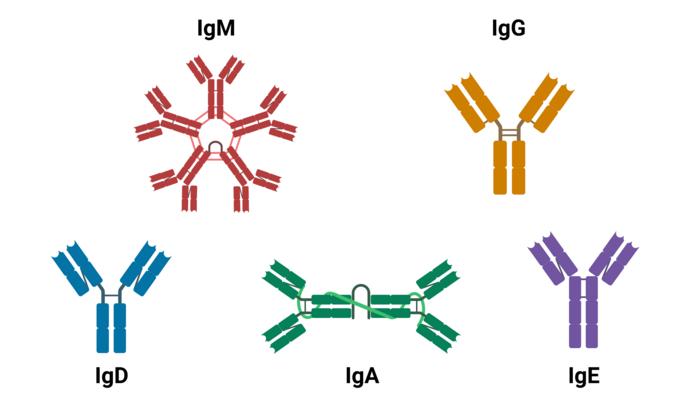The primary goal in cancer drug research is not merely to discover compounds that can destroy cancer cells, but to develop methods that specifically target and deliver these agents to cancer cells, sparing healthy ones. In many types of cancer, tumor cells have an overabundance of specific membrane proteins; this often grants them special properties, such as accelerated growth, immune system avoidance, or the capacity to anchor themselves to other tissues. Interestingly, while the overexpression of membrane proteins can increase the aggressiveness of cancer, it also presents a potential vulnerability for targeted therapies.

Credit: סתו כסלו at Openverse
The primary goal in cancer drug research is not merely to discover compounds that can destroy cancer cells, but to develop methods that specifically target and deliver these agents to cancer cells, sparing healthy ones. In many types of cancer, tumor cells have an overabundance of specific membrane proteins; this often grants them special properties, such as accelerated growth, immune system avoidance, or the capacity to anchor themselves to other tissues. Interestingly, while the overexpression of membrane proteins can increase the aggressiveness of cancer, it also presents a potential vulnerability for targeted therapies.
One notable example is cell adhesion molecule 1 (CADM1), a membrane protein that plays a role in cell signaling and maintenance of cellular structures. Various studies have found that CADM1 is overexpressed in certain tumors. Thus, targeting this protein with an antibody carrying a drug payload could be an effective way to suppress tumor growth, with limited side effects. Interestingly, in 2022, a research team from Japan found that the simultaneous administration of two different anti-CADM1 antibodies, called 3E1 and 9D2, had a greater tumor suppressive effect, even though only 3E1 was carrying a drug payload. Unfortunately, the reasons behind this were not clearly understood at that time.
Now, however, in a recent study published in the Journal of Controlled Release, the same research group delved deeper into this issue, seeking definitive answers. By engineering several types of antibodies and using a plethora of analytical techniques, they unveiled a promising mechanism that might prove useful in the treatment of cancers, leveraging antibodies as a drug delivery mechanism. The study was made available online on June 12, 2024, and was led by Dr. Akihiko Ito, Professor at Kindai University, Japan.
First, the researchers noted that when 3E1 and 9D2 were co-administered to cultured cells, the CADM1 protein was found in the detergent-insoluble fraction rather than in the usual detergent-soluble fraction. This implied that the antibodies made the CADM1 proteins relocate to a different, more stable cellular structure—one which was not dissolved by standard detergents used during lipid and protein extraction.
Curious about this finding, the researchers conducted various experiments to elucidate the underlying mechanisms. They engineered various isotypes of 3E1 and 9D2 antibodies bearing different heavy chains, which essentially altered the antibodies’ structure and the antibody–cell interactions. Then, they analyzed the effects of different combinations of antibody isotypes on the CADM1 relocation. Moreover, they also tagged these antibodies with fluorescent compounds to track their position in cultured cells and employed various inhibitors of cell ingestion mechanisms to narrow down potential ingestion pathways.
After thorough analysis, the team identified the most plausible explanation for the observed effects. They observed that the 9D2 antibodies form a five-unit cluster, known as a pentameric structure, that binds to CADM1. This large structure prevents a type of cell-cell interaction known as trans-binding, in which an antibody or ligand can bind to receptors on two different cells simultaneously and bring them close together. By preventing this effect, both 3E1 and 9D2 bind strongly to CADM1 on the same cell’s surface, leading to the clustering of this protein and relocating it to cell membrane structures called lipid raft domains. This relocation ultimately triggers lipid raft-mediated endocytosis, leading to ingestion of both the CADM1 cluster and the antibodies by the cell.
By outlining this mechanism, the researchers clarified why the co-administration of drug-carrying 3E1 antibodies alongside 9D2 antibodies had a more pronounced anti-tumor effect than either of the antibodies alone. “Endocytosis is dysregulated in tumor cells, which affects tumor response to therapies, including antibody-drug conjugates. Thus, understanding how these conjugates are internalized by cells can help in designing therapeutic strategies that maximize drug uptake by tumor cells,” highlights Dr. Man Hagiyama, the first author of the article.
Worth noting, experiments in mice revealed the potential of the proposed approach. “Local administration of drug-carrying 3E1 and 9D2 significantly suppressed CADM1-overexpressing melanoma growth in mice compared with control treatment, resulting in a dramatic 92.7% reduction of tumor mass,” states Dr. Azusa Yoneshige, one of the corresponding authors of the article. “Our findings suggest isotype switching could be an effective approach for promoting the relocation of clinically relevant membrane proteins to the cytoplasm,” she further adds.
On the basis of these findings, the exploration of CADM1-targeting antibodies, such as 3E1 and 9D2, could open promising avenues for developing more effective cancer therapies. Further studies building on this knowledge will be important for refining these antibody-based treatments and enhancing their efficacy against CADM1-expressing tumors.
Kudos to Dr. Ito and his team for undertaking this research as it marks a significant step towards potentially improving outcomes for cancer patients through innovative therapeutic strategies.
Journal
Journal of Controlled Release
Method of Research
Experimental study
Subject of Research
Cells
Article Title
Efficient intracellular drug delivery by co-administration of two antibodies against cell adhesion molecule 1
Article Publication Date
12-Jun-2024



